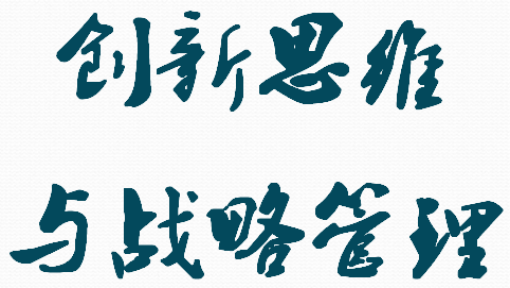
当前课程知识点:数字集成电路分析与设计 > The Devices > 4.Secondary Effects > Video
接下来我要介绍一些次级效应
这是这一堂课的最后一个主要内容
我将介绍两种不同的次级效应
第一种是阈值变化
第二种是亚阈值导电
你们可以看出
如果我们缩小晶体管的长度
首先VT将会随之下降
这是因为
你们可以在这张图里看出来,
如果我们缩小晶体管沟道长度,
这样,有pn结二极管产生的
耗尽区将成为整个耗尽区的主要组成部分,对吧
换句话说
我们不需要更大的VGS,
就可以使晶体管导通。
所以随着沟道长度的缩小,
源极和
和漏极pn结所造成的耗尽区变得更加重要。
同样,漏端感应势垒降低的效应也是同样的情况。
如果我们提高漏极电压
会发生一样的事情,
这同样是因为
pn结产生的耗尽区
占了整个耗尽区的很大一部分,
所以我们不需要更高的VGS
就仍然可以使晶体管导通。
这是阈值变化次级效应。
另一个是亚阈值导通次级效应。
你是否还记得我说过当VGS小于VT时
我们没有任何电流,对吧,这是耗尽区
但是在实际中,即使VGS小于VT
电流仍然存在。
这被称作漏电电流
而且不幸的是
在这个工作区的电流
与电压成指数关系。
这个问题就很严重了。
即使电路不工作
电路中仍有电流
这是个大麻烦了吧,对吧?
这正是半导体业界
面临的一个大问题
这会导致功耗大幅增加。
这之后,我会更加深入地介绍漏电电流的事情。
我们在这里给出斜率因子S的定义
斜率因子的单位是mv/dec
S的值一般为60到100 mv/dec
我们需要记住
在现实中从晶体管导通到晶体管关断不是突变的
It is gradual
实际上往往是逐渐变化的
-1
--文档
-1.Introduction to Digital IC
--Video
-2.Architecture of Digital Processor
--Video
-3.Full Custom Design Methodology
--Video
-4.Semicustom Design Methodology
--Video
-5.Quality Metric of Digital IC
--Video
-6.Summary and Textbook Reference
--Video
-7.HW--作业
-7.PPT
--补充材料1
--补充材料2
-Key Points Review of Last Lecture
--Video
-1.Introduction
--Video
-2.The Diode
--Video
-3.The MOSFET Transistor
--Video
-4.Secondary Effects
--Video
-5.Summary and Textbook Reference
--Video
-6.HW--作业
-6.PPT
--补充材料
-Key Points Review of Last Lecture
--Video
-1.Introduction
--Video
-2.Static Behavior
--Video
-3.HW--作业
-3.PPT
--补充材料
-Key Points Review of Last Lecture
--Video
-1.Dynamic Behavior I
--Video
-2.Dynamic Behavior II
--Video
-3.Power Dissipation
--Video
-4. Summary and Textbook Reference
--Video
-5.HW--作业
-5.PPT
--补充材料
-1.Introduction
--Video
-2.Static CMOS Design I
--Video
-3.Static CMOS Design II
--Video
-4.HW--作业
-4.PPT
--补充材料
-Key Points Review of Last Lecture
--Video
-1.Static CMOS Design III
--Video
-2.Static CMOS Design IV
--Video
-3.Dynamic CMOS Design
--Video
-4.Summary
--Video
-5.HW--作业
-5.PPT
--补充材料
-1.Introduction I
--Video
-2.Introduction II
--Video
-3. Static Latches and Registers I
--Video
-4.Static Latches and Registers II
--Video
-5.Static Latches and Registers III
--Video
-6.HW--作业
-6.PPT
--补充材料
-1.Key Points Review
--Video
-2.Dynamic Latches and Registers I
--Video
-3.Dynamic Latches and Registers II
--Video
-4.Dynamic Latches and Registers III
--Video
-5.Pulse Register
--Video
-6.Pipelining
--Video
-7.Schmitt Trigger
--Video
-8.Summary and Textbook Reference
--Video
-9.HW--作业
-9.PPT
--补充材料
-1. Introduction
--Video
-2. Adder: Full Adder (Definition)
--Video
-3. Adder: Circuit Design
--Video
-4. Adder: Logic Design I
--Video
-5. Adder: Logic Design II
--Video
-6. Adder: Summary
--Video
-7.HW--作业
-7.PPT
--补充材料
-1. Key Points Review
--Video
-2. Multiplier
--Video
-3. Shifter
--Video
-4. Summary and Textbook Reference
--Video
-5. HW--作业
-5. PPT
--补充材料
-1. Introduction
--Video
-2. Capacitance
--Video
-3. Resistance
--Video
-4. Electrical Wire Models
--Video
-5. Summary and Textbook Reference
--Video
-6. HW--作业
-6. PPT
--补充材料
-1. Introduction
--Video
-2. Capacitive Parasitics
--Video
-3. Capacitive Parasitics II
--Video
-4. Resistive Parasitics
--Video
-5. Summary and Textbook Reference
--Video
-6. HW--作业
-6. PPT
--补充材料
-1. Assignment Solving
--Video
-2. The teaching assistants want to say
--Video
-1. Problem 1
--Video
-2. Problem 2
--Video
-3. Problem 3
--Video
-4. Problem 4
--Video
-5. Problem 5
--Video
-6. Problem 6
--Video
-7. Problem 7
--Video
-1. Problem 8
--Video
-2. Problem 9
--Video
-3. Problem 10
--Video
-4. Problem 11
--Video
-5. Problem 12
--Video
-6. Problem 13
--Video
-7. Problem 14
--Video


